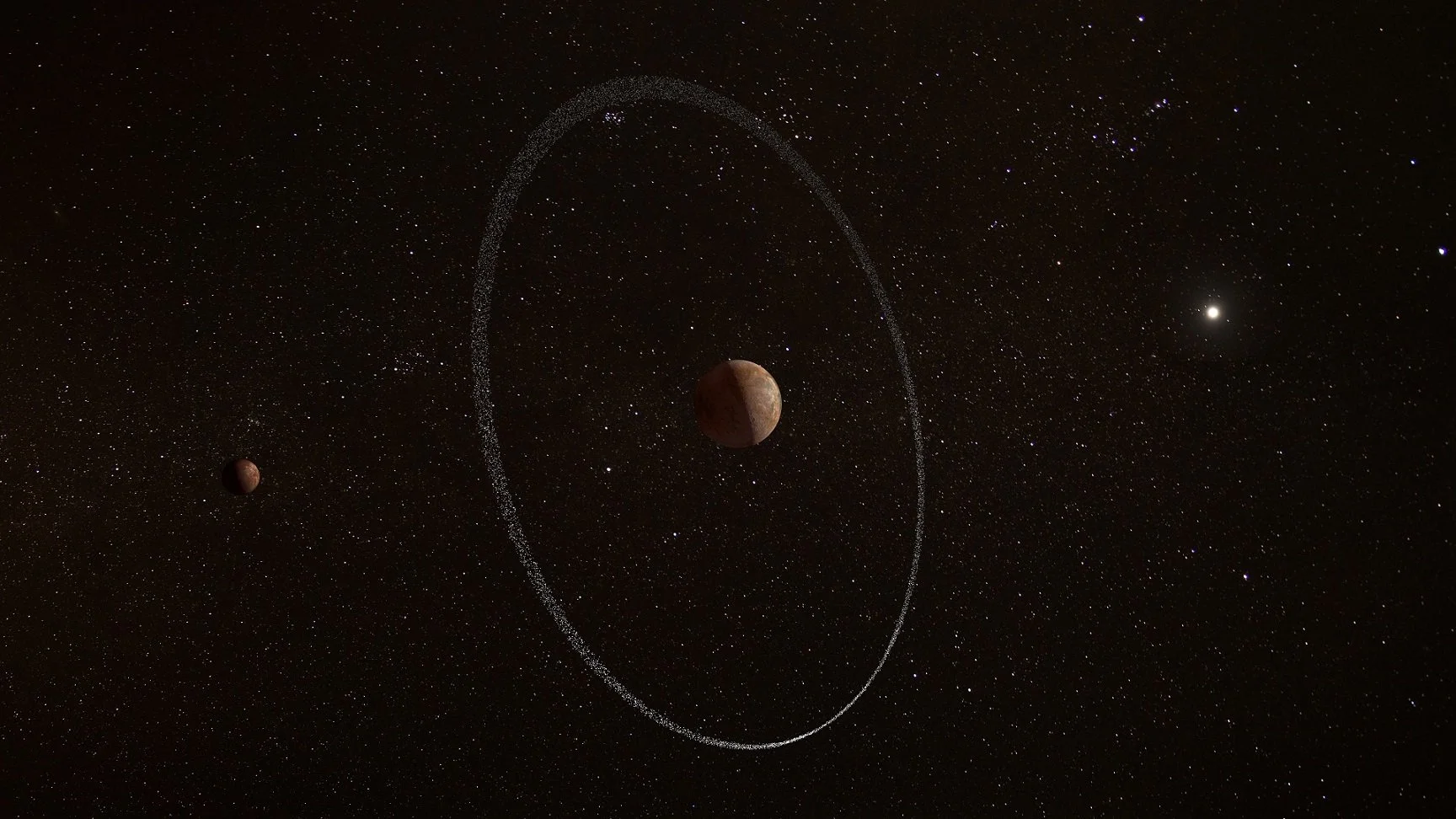Astronomers have discovered a ring system around a dwarf planet half the size of Pluto, known as Quaoar.
Quaoar and its ring. The celestial body seen on the left is Quaoar’s moon, Weywot
(Image Credit: ESA / ATG - CC BY-SA 3.0 IGO)
An international team of astronomers uncovered a ring system orbiting a dwarf planet located at the outer edge of our solar system known as Quaoar. Unlike other ring systems, Quaoar's ring orbits at a much greater distance, challenging existing theories on ring formation. Quaoar is about half the size of Pluto and orbits the Sun beyond Neptune.
The team published their findings in the peer-reviewed science journal nature. Their discovery was made using HiPERCAM, a high-speed camera with exceptional sensitivity developed by scientists at the University of Sheffield, which they mounted on the 10.4-meter Gran Telescopio Canarias on La Palma, the largest optical telescope in the world.
The Gran Telescopio Canarias, located on the Island of La Palma
(Image Credit: Juan Carlos Alonso Lopez via Shuttersock / HDR tune by Universal-Sci)
As the rings are way too small and dim to be seen in an image, the researchers detected them during a so-called occultation.
Occultation is an astronomical event that happens when one celestial body passes in front of another. In this case, Quaoar blocked the light from a background star during its orbit around the Sun. The temporary dip in the light from the background star revealed the presence of a ring system around Quaoar.
Ring systems are remarkably scarce in our solar system and are known to exist only around only celestial bodies: the giant planets (Jupiter, Saturn, Neptune, and Uranus) and two minor planets, Chariklo and Haumea.
Why Quaoar's ring system is special
All previously known ring systems are located very close to the parent body, allowing them to persist due to tidal forces that prevent the ring material from accreting (the accumulation of dust and other particles by gradual addition) and forming moons.
The ring system around Quaoar stands out due to its unique location at a distance of more than seven planetary radii, double the previously believed maximum radius defined by the Roche limit (the outer boundary of where ring systems were thought to be stable). In comparison, Saturn's main rings lie within three planetary radii. This finding necessitates a reconsideration of the current theories on ring formation.
The rings of Quaoar exist far beyond the Roche limit. Forcint scientist to rethink their understanding of ring systems
(Image Credit: Paris Observatory)
According to Professor Vik Dhillon, one of the authors of the research paper, he and his team did not expect to discover a new ring system in our solar system. The high-speed HiPERCAM instrument made their discovery possible, as the event lasted less than a minute.
Dhillon hopes that these new findings will give us a better understanding of how ring systems arise.
If you are interested in more details about the research, be sure to check out the paper listed below.
Sources and further reading:
Too busy to follow science news during the week? - Consider subscribing to our (free) newsletter - (Universal-Sci Weekly) - and get the 5 most interesting science articles of the week in your inbox
FEATURED ARTICLES:










